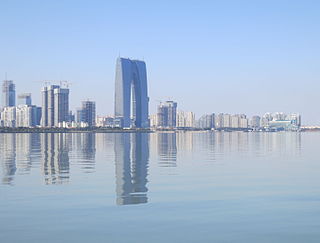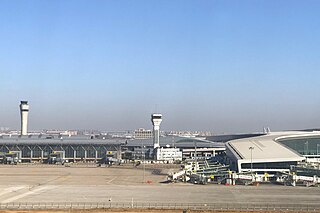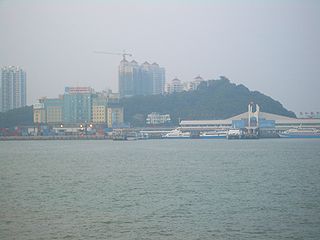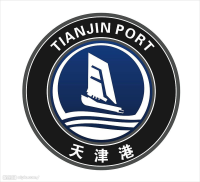
Suzhou, alternately romanized as Soochow, is a major city located in southeastern Jiangsu Province of East China, about 100 km (62 mi) northwest of Shanghai. It is a major economic center and focal point of trade and commerce, and the second largest city in the province, after its capital Nanjing. The city is situated on the lower reaches of the Yangtze River and the shores of Lake Tai and belongs to the Yangtze River Delta region. Administratively, Suzhou is a prefecture-level city with a population of 4.33 million in its city proper, and a total resident population of 10.58 million in its administrative area. Its urban population grew at an unprecedented rate of 6.5% between 2000 and 2014, which is the highest among cities with more than 5 million people.

Shanghai Pudong International Airport is one of the two international airports in Shanghai and a major aviation hub of East Asia. Pudong Airport mainly serves international flights, while the city's other major airport Shanghai Hongqiao International Airport mainly serves domestic and regional flights in East Asia. Located about 30 kilometres (19 mi) east of the city center, Pudong Airport occupies a 40-square-kilometre (10,000-acre) site adjacent to the coastline in eastern Pudong. The airport is operated by Shanghai Airport Authority.

Guangzhou Baiyun International Airport is the major airport of Guangzhou, Guangdong province. Both airport codes were inherited from the former Baiyun Airport, and the IATA code is derived from Guangzhou's historical romanization Canton. Baiyun Airport serves as a hub for China Southern Airlines, FedEx Express, 9 Air, Hainan Airlines and Shenzhen Airlines.

Zhengzhou Xinzheng International Airport is the principal airport serving Zhengzhou, the capital of Henan province, China.

The Kulma Pass or Qolma Pass, also referred to as Karasu Pass, is a mountain pass across the Pamir Mountains on the border between Murghob District, Gorno-Badakhshan Autonomous Region in Tajikistan and Taxkorgan Tajik Autonomous County, Kashgar Prefecture, Xinjiang Uygur Autonomous Region in China. Asian Highway AH66 runs through the pass, which provides for the only modern day overland border crossing along the 450 km boundary between the two nations.

The world's busiest ports are commonly ranked by cargo tonnage and by volume of container shipment measured in TEUs. Since the 2000s, the Port of Shanghai has surpassed the Port of Singapore and the Port of Hong Kong to become the world's busiest port by both measures.

Guilin Liangjiang International Airport is the airport serving the city of Guilin in Guangxi Zhuang Autonomous Region, China. It is located in Liangjiang, about 28 km (17 mi) southwest of the city center.

The Port of Zhuhai is the port of the prefecture-level city of Zhuhai, on the west side of the Pearl River estuary in the Chinese province of Guangdong. The Port of Zhuhai is composed of seven main port areas: Gaolan, Wanshan, Jiuzhou, Xiangzhou, Tangjia, Hongwan and Doumen. The main areas are the Jiuzhou Port Area to the east of the city, and the Gaolan Port Area to the west. As of 2012, the port had 131 berths, 126 production berths, of which 17 were deep-water berths over 10,000DWT.

Taizhou Luqiao Airport, formerly Huangyan Luqiao Airport, is a dual-use military and civil airport serving the city of Taizhou in Zhejiang Province, China. It is located in Luqiao District, 20 kilometers from the city center. In 2010 the airport handled 616,861 passengers and 5,483 tons of cargo.

Mianyang Nanjiao Airport is an airport serving the city of Mianyang in Sichuan Province, China. It is located in the southern suburbs of Mianyang, 10 kilometers from the city center.

Wanzhou Wuqiao Airport is an airport serving Wanzhou District of Chongqing, China. It is located 15 kilometres (9.3 mi) from the centre of Wanzhou. The airport was opened on 29 May 2003.
The Port of Ningbo-Zhoushan is a port that is the busiest in the world in terms of cargo tonnage. It handled 888.96 million tons of cargo in 2015. The port is located in Ningbo and Zhoushan, on the coast of the East China Sea, in Zhejiang province on the southeast end of Hangzhou Bay, across which it faces the municipality of Shanghai.

The Port of Tianjin, formerly known as the Port of Tanggu, is the largest port in Northern China and the main maritime gateway to Beijing. The name "Tianjin Xingang", which strictly speaking refers only to the main seaport area, is sometimes used to refer to the whole port. The port is on the western shore of the Bohai Bay, centred on the estuary of the Haihe River, 170 km southeast of Beijing and 60 km east of Tianjin city. It is the largest man-made port in mainland China, and one of the largest in the world. It covers 121 square kilometers of land surface, with over 31.9 km of quay shoreline and 151 production berths at the end of 2010.

Yangzhou Taizhou International Airport, often abbreviated to Yangtai Airport, is an airport serving the cities of Yangzhou and Taizhou in central Jiangsu Province. It is located in the town of Dinggou in Jiangdu District, Yangzhou, 30 kilometers from the center of Yangzhou and 20 kilometers from Taizhou. Another major city, Zhenjiang, is also nearby across the Yangtze River.

Chizhou Jiuhuashan Airport is an airport serving the city of Chizhou in Anhui Province, China. It is located in Guichi District, 20 kilometers from the city center. The airport also serves the city of Tongling and the Buddhist sacred mountain of Jiuhuashan, both 20 kilometers away. Construction of the airport began on 26 August 2009. It was originally expected to cost 609 million yuan and to open in 2011, but the actual opening date was 29 July 2013, with a total cost of 889 million yuan.
The Port of Tianjin, formerly known as the Port of Tanggu, is the largest port in Northern China and the main maritime gateway to Beijing. The name "Tianjin Xingang"(Chinese: 天津新港; pinyin: tiānjīn xīngǎng; lit. 'Tianjin New Port'), which strictly speaking refers only to the main seaport area, is sometimes used to refer to the whole port. The Port is located on the western shore of the Bohai Bay, centered on the estuary of the Haihe River, 170 km south east of Beijing and 60 km east of Tianjin city. It is the largest man-made port in mainland China, and one of the largest in the world. It covers 121 square kilometers of land surface, with over 31.9 km of quay shoreline and 151 production berths at the end of 2010.
The Port of Longkou is an artificial deep-water international seaport on the coast of Longkou, Yantai Prefecture, Shandong, People's Republic of China. It is located on the northern shore of Shandong Peninsula, opening to the Laizhou Bay of the Bohai Sea.
The Port of Jiangyin is a natural inland port located at Jiangyin, Wuxi Prefecture, Jiangsu, People's Republic of China. It extends over 35 km of the southern shore of the Yangtze river. The port had a container throughput of 1,001,000 TEU in 2013
The Port of Huizhou is a natural coastal port located on Huizhou, Guangdong, People's Republic of China, immediately east of Shenzhen and Hong Kong. It opens into the Daya Bay. Started only 20 years ago, it has moved from a fishing village to another large player in the Pearl River Delta shipping hub. In 2012, its total cargo throughput was 51,18 million tonnes.













